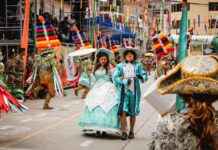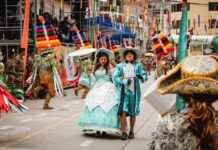The plane carrying from Brussels the remains of the first Prime Minister of the former Belgian Congo landed in the early morning in Kinshasa for a technical stopover, airport sources said. After a change of aircraft, the coffin and the accompanying delegation must fly to the province of Sankuru (center), where Lumumba was born in 1925, in the village of Onalua.
This is the start of a nine-day journey through the country, which will stop at emblematic sites in the life of Patrice Lumumba and will end on June 30 in the capital where, after a three-day national mourning, a mausoleum will host a burial ceremony.
«His spirit, which was imprisoned in Belgium, is coming back here,» consoles Onalua Maurice Tasombo Omatuku, traditional chief and nephew of Lumumba, torn between the joy of finally being able to «mourn» his uncle and the «sadness» of know that he had «really been murdered».
The village, which has been part of a «tribute» town called Lumumbaville since 2013, is actively preparing to welcome «the rest» of the country’s child.
Under a scorching sun, men on Tuesday cleared the thick layer of sand covering the road that connects Onalua to the neighboring town of Tshumbe. Grasses and tree branches were removed under the supervision of the police, while palm leaves, a symbol of mourning or celebration, were installed at the side of the road, alongside Congolese flags.
A modest podium in the colors of the DRC (yellow-blue-red), tents, large posters bearing the image of Lumumba, are erected on the village square which will accommodate the coffin. Women and men, some in traditional dress, greet newcomers to the sound of drums and Tetela dances, the Lumumba ethnic group.
– «The son returns» –
«There is the family plot where Lumumba was born», indicates a resident a few meters away, pointing to a large concrete house, unfinished, dilapidated, a large part of the roof washed away.
A little further on, Catherine Mbutshu, advanced in age, expresses her joy at the idea that the «relic» of Patrice Lumumba is brought back to the land of his ancestors. «I’m old, my legs hurt, but I’m happy because the son is coming back», declares this woman presented as having rubbed shoulders with Lumumba during his lifetime. «I spoke with him before he left for Kisangani», his political stronghold, in the northeast, she assures.
Patrice Emery Lumumba entered into legend on the day of the proclamation of the independence of the Congo, June 30, 1960, with a speech with very strong words against the racism of the colonists. The following September, he was overthrown, then executed on January 17, 1961 with two brothers in arms, Maurice Mpolo and Joseph Okito, by separatists from the Katanga region (south), with the support of Belgian mercenaries.
His body, dissolved in acid, was never found. It took decades to discover that human remains had been kept in Belgium, when a Belgian police officer involved in the disappearance bragged about it in the media. A tooth that this police officer had in his possession was seized in 2016 by Belgian justice.
Contained in a box, it was placed in a coffin handed over to the Congolese authorities on Monday in Brussels in the presence of the family of the assassinated leader, during an emotional ceremony. «Father, we mourned your disappearance without having made a funeral oration (…) our duty as a descendant was to (you) offer a dignified burial», declared his daughter Juliana.
Belgian Prime Minister Alexander De Croo for his part renewed the «apologies» of the Brussels government for its «moral responsibility» in the disappearance of Patrice Lumumba. Two weeks ago, it was King Philippe of Belgium, visiting the DRC for the first time, who reiterated in Kinshasa his «deepest regrets for the wounds» inflicted during colonization.














